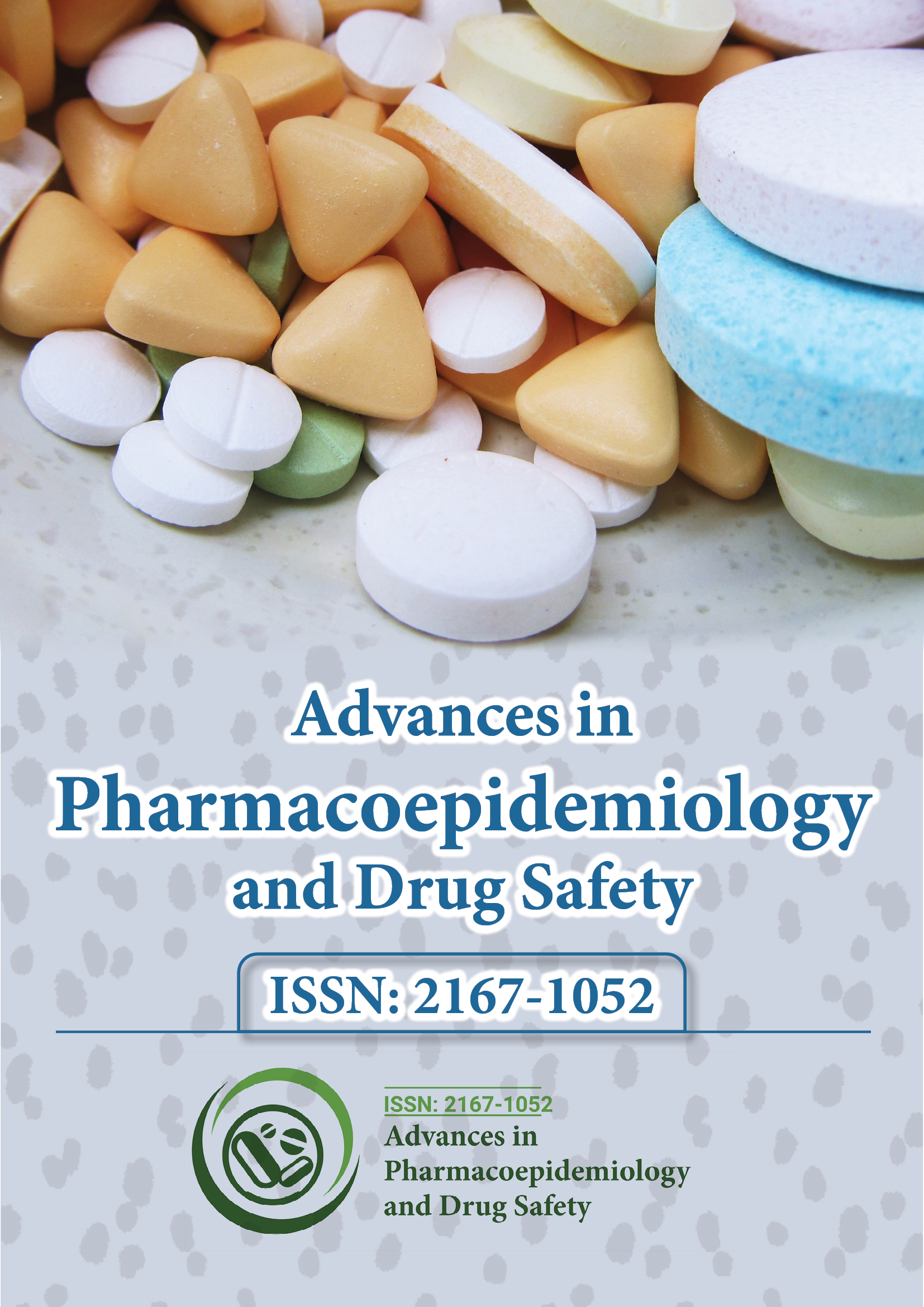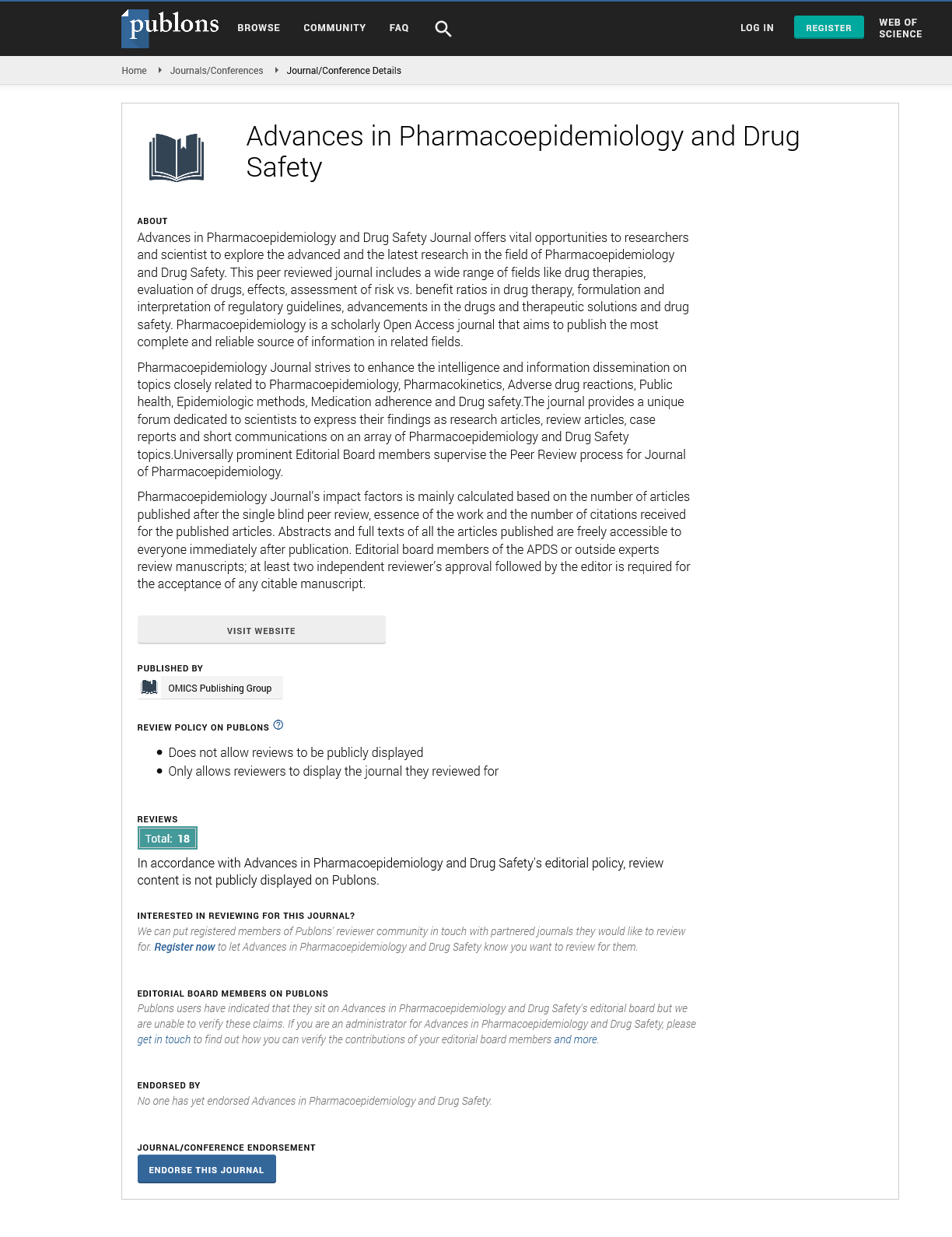Indexed In
- Open J Gate
- Genamics JournalSeek
- Academic Keys
- JournalTOCs
- RefSeek
- Hamdard University
- EBSCO A-Z
- SWB online catalog
- Publons
- Geneva Foundation for Medical Education and Research
- Euro Pub
- Google Scholar
Useful Links
Share This Page
Journal Flyer

Open Access Journals
- Agri and Aquaculture
- Biochemistry
- Bioinformatics & Systems Biology
- Business & Management
- Chemistry
- Clinical Sciences
- Engineering
- Food & Nutrition
- General Science
- Genetics & Molecular Biology
- Immunology & Microbiology
- Medical Sciences
- Neuroscience & Psychology
- Nursing & Health Care
- Pharmaceutical Sciences
Perspective - (2024) Volume 13, Issue 3
The Future of Pharmacoepidemiology: Transforming Drug Safety through Technology and AI
Rodrigo Xia*Received: 30-Aug-2024, Manuscript No. PDS-24-27218; Editor assigned: 02-Sep-2024, Pre QC No. PDS-24-27218 (PQ); Reviewed: 16-Sep-2024, QC No. PDS-24-27218; Revised: 23-Sep-2024, Manuscript No. PDS-24-27218 (R); Published: 30-Sep-2024, DOI: 10.35250/2167-1052.24.13.365
Description
The future of pharmacoepidemiology and drug safety is set for significant transformation due to advances in technology, data analytics and the growing emphasis on personalized medicine. As the global pharmaceutical industry expands, new challenges arise in ensuring the safety and efficacy of drugs. Managing these challenges will require innovative approaches, leveraging the latest tools in pharmacovigilance, Artificial Intelligence (AI) and regulatory science.
One of the most critical advancements in the field is the enhancement of pharmacovigilance, which involves the systematic monitoring of Adverse Drug Reactions (ADRs). This process relies on the extensive collection and analysis of data to detect, assess and prevent adverse effects. Given the complexity of modern drug therapies, such as those used in anti-tuberculosis treatments and chemotherapy, the need for strong pharmacovigilance systems is more essential than ever. These drugs often come with significant risks of ADRs and pharmacovigilance aims to mitigate these risks by ensuring that reactions are tracked in real-time and that healthcare providers are alerted to newly discovered drug interactions or side effects.
Pharmacovigilance has traditionally relied on spontaneous reporting systems, but the incorporation of digital technologies now offers the potential for more real-time monitoring. New pharmacovigilance databases can utilize large-scale patient records, Electronic Health Records (EHRs) and mobile health applications to track ADRs with greater accuracy and speed. Realtime pharmacovigilance systems are becoming essential tools for detecting early signals of ADRs, offering timely insights that can improve patient safety on a global scale.
A significant trend that is revolutionizing pharmacoepidemiology is the use of computer-aided systems, especially those powered by AI and machine learning. By applying these technologies, researchers can now process vast amounts of data from clinical trials, medical records and observational studies. This evidencebased approach enables the identification of patterns in drug use, uncovering relationships between medications and adverse effects that would be difficult or impossible to detect manually. AI is particularly effective in finding correlations within massive datasets, leading to more precise predictions of risk factors for adverse reactions.
Machine learning algorithms can also assist in identifying patient subgroups that are more likely to experience ADRs based on their medical history or genetic makeup. This capability opens the door to more personalized treatment strategies, where drug therapies can be adapted for individual patients based on their unique genetic profiles. Personalized medicine is increasingly becoming a focal point in modern healthcare and AI’s ability to optimize treatment plans represents a significant advancement in ensuring both drug safety and efficacy. This technology not only improves patient outcomes but also reduces the likelihood of ADRs by ensuring that the right drug is prescribed to the right patient.
As the global population ages, there is an increased focus on the pharmacovigilance of older adults. Elderly patients are particularly at risk to drug-induced complications due to the physiological changes associated with aging and the higher likelihood of polypharmacy (the simultaneous use of multiple medications). These patients often experience modified drug metabolism, leading to an increased risk of ADRs. Studies have shown that older adults are at heightened risk for conditions such as drug-induced delirium, further emphasizing the need for targeted safety protocols for this demographic. Age-specific pharmacovigilance practices are essential to minimize the risks of ADRs in older populations, ensuring that drug therapies are both safe and effective for them.
In conclusion, the future of pharmacoepidemiology and drug safety is characterized by a combination of technological innovation, personalized medicine and regulatory evolution. These advancements hold great potential to optimize drug safety, enhance patient outcomes and reduce the global burden of ADRs. As the field continues to evolve, a concerted effort from all relevant parties-healthcare providers, researchers, pharmaceutical companies and regulatory bodies will be important in ensuring that these innovations are effectively translated into improved patient care on a global scale.
Citation: Xia R (2024). The Future of Pharmacoepidemiology: Transforming Drug Safety through Technology and AI. Adv Pharmacoepidemiol Drug Saf. 13:365.
Copyright: © 2024 Xia R. This is an open access article distributed under the terms of the Creative Commons Attribution License, which permits unrestricted use, distribution, and reproduction in any medium, provided the original author and source are credited.

